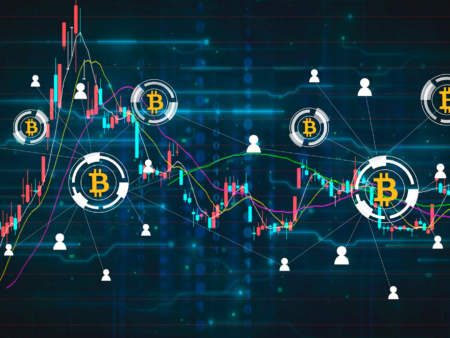Over the last ten days, Litecoin’s blockchain experiences a sharp decline with around 200,000 addresses emptied since November.
On the Litecoin blockchain, the number of cryptocurrency addresses with a positive balance has significantly decreased over the past ten days. In actuality, about 200,000 public addresses storing LTC had emptied since the end of November.

The Litecoin network’s decrease in cryptocurrency activity
This is a really strong drop, primarily in terms of speed but also not so much in terms of extent.
Although there were 9.3 million public addresses holding LTC at the end of November, there are actually more than 9.1 million public addresses holding LTC overall on the Litecoin blockchain.
However, it should be highlighted that there were fewer than 8.6 million in June alone, and that number has essentially climbed almost continuously since then.
Therefore, even though there was a large and abrupt drop, it doesn’t appear to be a symptom of a problem. Maybe this is just a “retracement” because they had grown so much in the last few months.
It should be emphasized that there are 50 million public addresses with a positive balance—more than five times as many—on the Bitcoin blockchain. Nevertheless, 9.1 million addresses with a positive balance is not at all a modest number considering that the market value of LTC is over 170 times lower than that of BTC.
The cost of the cryptocurrency Litecoin (LTC)
The August 6 halving caused a decline in the price of LTC.
As is typically the case, it had actually climbed prior to the halving, but it immediately collapsed after.
Litecoin was worth $63 by the end of 2022, but by July, it had increased to $107, a nearly 70% increase.
However, it subsequently began to decline, to the point that, in September, it had even dropped below $61, the closing price for 2022.
It should be emphasized, nevertheless, that the price of LTC did not drop to $47 in June 2022—the bottom of the previous bear market—until November, when FTX filed for bankruptcy, thanks to the halving.
Hence, even if the October 2023 low was below the price at which 2022 came to a close, it was still significantly higher than the bear market’s lowest point.
But during the past three months, it has increased to $73, undoubtedly due to the overall expansion of the cryptocurrency sector.
The halving of Litecoin
The Litecoin halving had already demonstrated its inability to provide a rising trend for the price of LTC.
All three of the Litecoin halvings were followed by a decrease a few months later, whereas the three Bitcoin halvings had all resulted in a fresh bullrun. In other words, whereas the price of Bitcoin tends to increase due to the Bitcoin halving, the price of Litecoin does not.
Rather, the price of LTC is heavily influenced by the overall trend of the cryptocurrency market, which is influenced by the direction of the price of Bitcoin. As a result, the price of LTC is more affected by the indirect effects of the Bitcoin halving than by the Litecoin halving.
Four months after the last Litecoin halving, LTC is currently 21% cheaper than it was before the splitting as well as 82% below its all-time highs set in May 2021.
The incoherence
All of this, though, conflicts with a few on.chain data points that appear to indicate otherwise.
In actuality, since mid-November, the number of daily active Litecoin addresses has climbed, despite a noticeable and abrupt decline in the number of addresses with a positive balance.
They had fallen to 183,000 following the reduction, but on November 14th, they achieved a daily peak of more than 1.1 million. Moreover, the number of cases per day has exceeded 500,000 since December 5th, a figure not recorded since June.
Although the level on November 14th is really the all-time high for this statistic on the Litecoin blockchain, these are not record levels on average.
In addition, there are more and more transactions every day.
More over a million people were there on the day of the peak, setting even another record. More than 400,000 are being added every day as of December 5th, a number not seen since May.
Although the price increase in recent weeks is likely what caused these results, they are in conflict with the rapid reduction of addresses with a positive balance.
Therefore, the consolidation of funds from numerous addresses into a small number could have simply resulted in a form of restructuring of some wallets.











